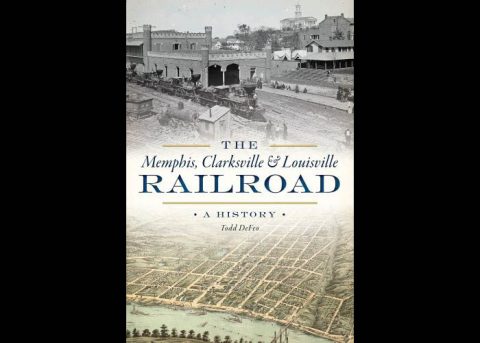 Atlanta, GA – A new book chronicles the history of the Memphis, Clarksville & Louisville Railroad, and is believed to be the first-ever complete history of the line.
Atlanta, GA – A new book chronicles the history of the Memphis, Clarksville & Louisville Railroad, and is believed to be the first-ever complete history of the line.
The line, chartered in 1852, ran between Paris, Tennessee, and Guthrie, Kentucky, and formed part of the Louisville & Nashville Railroad’s Memphis branch. The Louisville & Nashville acquired the road in the 1870s.
The book, published by The History Press, is the second from author Todd DeFeo, who is the editor of Railfanning.org and the founder of The DeFeo Groupe, an Atlanta area content creation firm. In July, DeFeo published a book on the Western & Atlantic Railroad, which ran between Atlanta Georgia and Chattanooga, Tennessee.
“I first learned of the Memphis, Clarksville & Louisville in 2002, and it was intriguing to me from the start,” DeFeo said. “I wrote an article for the local newspaper in 2003 in honor of the 135th anniversary of the February 1868 strike that spelled doom for the line, which struggled to operate from its inception.”
Earlier this year, at the request of DeFeo, Montgomery County Mayor Jim Durrett declared July 28th as Budds Creek Disaster Day of Remembrance.
The proclamation honors the sesquicentennial of a Memphis, Clarksville & Louisville Railroad disaster on July 28th
The Memphis, Clarksville & Louisville formed an integral part of the railroad link between New Orleans and New York. The Louisville & Nashville purchased the railroad in 1871 and operated it as part of its Memphis Branch for more than a century.
DeFeo has written about the Memphis, Clarksville & Louisville extensively for Railfanning.org.
“Many histories mention, usually briefly, the Memphis, Clarksville & Louisville Railroad, but few records of the railroad seem to exist, and the accounts that do are incomplete,” DeFeo said. “So, writing a history of this railroad required weaving together a narrative based on the limited files and the news accounts.”
For more information, visit Railfanning.org/books.




